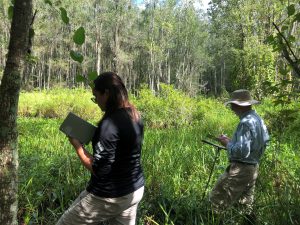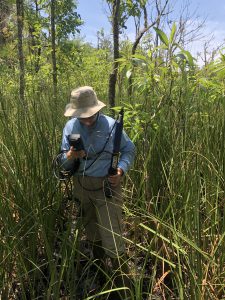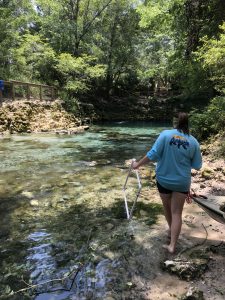Written by 2022 Summer Intern Megan Sanford, hosted by Suwannee River Water Management District

Overview and Acknowledgments
This summer I had the fantastic opportunity to work in the water resources department at the Suwannee River Water Management District. I worked on numerous projects throughout the district and learned the ins and outs of a state agency. I am grateful for the wonderful mentorship I received from Stephanie Armstrong, Marc Minno, and Susie Hetrick, all of whom contributed to me gaining the experience and knowledge I need to enter a natural resource-related field.

Fieldwork – Seeing the District!
Throughout the summer I was able to partake in fieldwork to see an array of different techniques for water quality assessment and management. Getting into the field and seeing the water systems of northern Florida was the highlight of my summer. Some of the fieldwork I participated in at the district included collecting water quality data using YSI Exo Sondes, mapping the bottom of the Suwannee River using sonar technology, and calculating river discharge measurements using Acoustic Doppler Current Profilers, and performing transects across springs to observe algae growth. It was incredibly valuable to me to witness data being collected in the field that ultimately aids management decisions for the betterment of our environment.
Project – Steinhatchee River Report

At the district, I had the support and necessary means to investigate my own project examining water quality in the Steinhatchee River water system. The Steinhatchee River is a remote and undeveloped river in the district. The river is known for its recreational fishing and scalloping. Reports of complaints about the system’s water quality were called in by the public and concerns about an increase in iron bacteria in the river were brought up. Using the guidance of the district, as well as GIS, R studio, Hydrstra, and excel, I was able to put together a report investigating the decrease in water quality and potential causes for the turbidity. Putting together the report gave me a better insight into understanding water quality parameters and signaling. Also, thanks to the district’s large database and sampling sites, I had access to all of the required information needed to compile my report. Overall, land use changes, naturally high iron concentrations in the surrounding groundwater, runoff of the surrounding wetlands, and an above-average year for rainfall were all contributing factors to the decrease of water quality throughout the river.

Wrap-Up
Overall, this experience gave me not only valuable knowledge that will be applicable in my chosen field but also insight into what career paths are available at state agencies. Thank you to the Nature Coast Biological Station for supporting my internship and providing me with this opportunity, as well as everyone at the District who assisted me this summer!
 1
1
